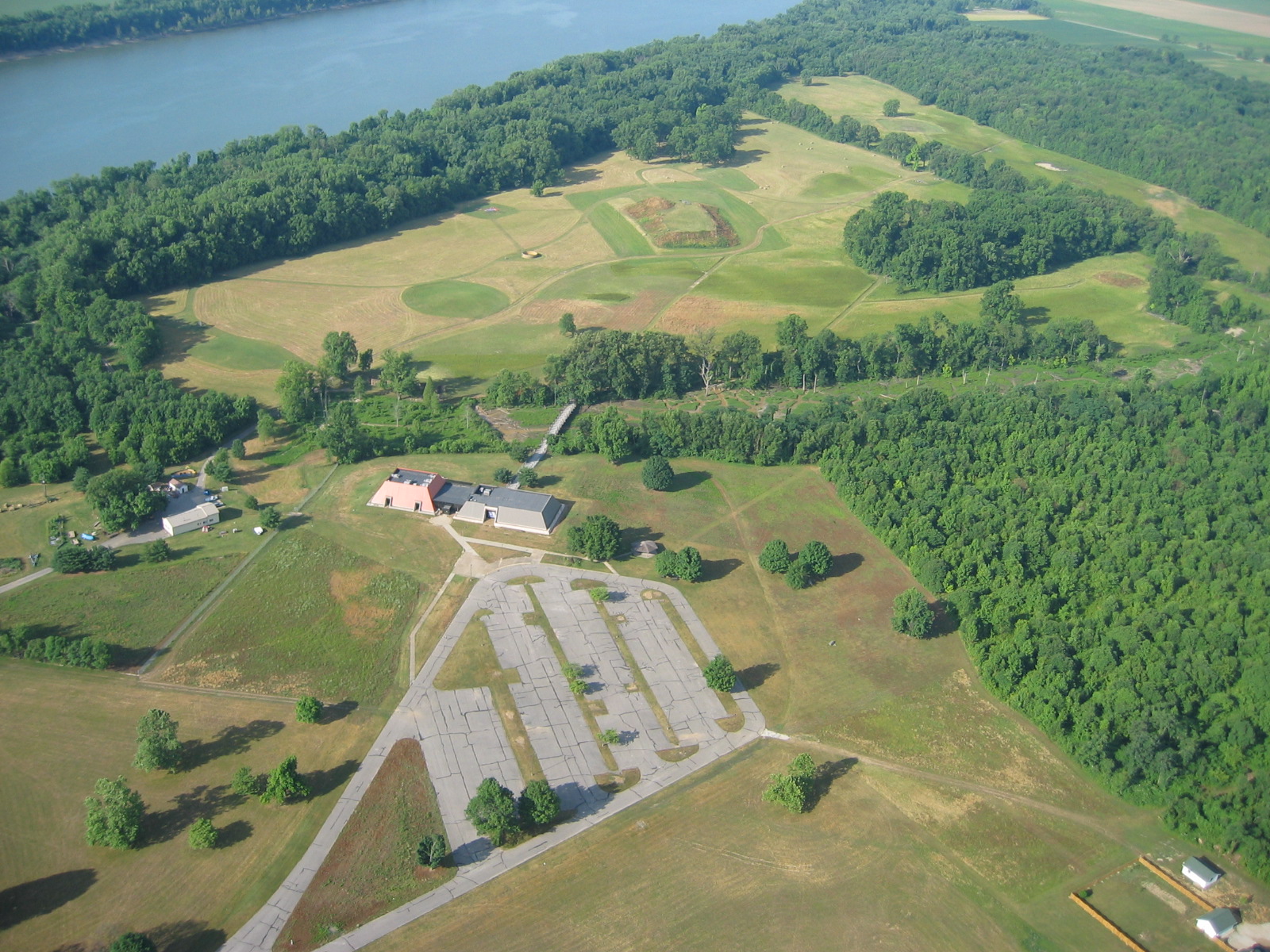Angel Mounds State Historic Site


Angel Mounds State Historic Site is a Mississippian cultural site located along the Ohio River in Southwest Indiana. The site was home to a group of people from approximately 1000 to 1450. During this time, the residents constructed 11 earthen structures, truncated pyramids, for both status and ceremonial purposes. The largest structure, Mound A, is over 600 ft. long, 400 ft. wide and close to 40 ft. at its peak. The mounds at Angel Site were designed to elevate the elite of the community, with one being designated for ceremonial purposes. A combination of climate change, depletion of resources and possibly earthquake all combined to cause the abandonment of the site around 1450.
In 1938, the site was acquired by the Indiana Historical Society, and in 1939 A Works Progress Administration project was awarded to the site to carry out archaeological investigations of the property. Under the direction of Glenn A. Black, and with the support of Eli Lilly, pharmaceutical giant in Indianapolis, 277 men began work on the site in April of 1939. Their work would continue till May of 1942 when the United States entered WWII.
In 1946, Indiana University took over the excavations, again under the direction of Glenn Black, and Angel Site would become the official field school location for the university. That same year ownership of the site was transferred to the State of Indiana, with Indiana University retaining the excavation rights.
Today Angel Mounds State Historic Site is part of the Indiana State Museum and Historic Sites, an agency of the State of Indiana. The site contains a museum and visitors center that details the work done by archaeologists and what that tells us about the life ways of the people who lived there. A hiking trail guides you around the village site to highlights, with markers discussing certain points along the trail. A reconstructed WPA laboratory is also on the site where field school work is done and explained to the visitor when an active excavation is going on.
Distance Unit:
Distance Unit: